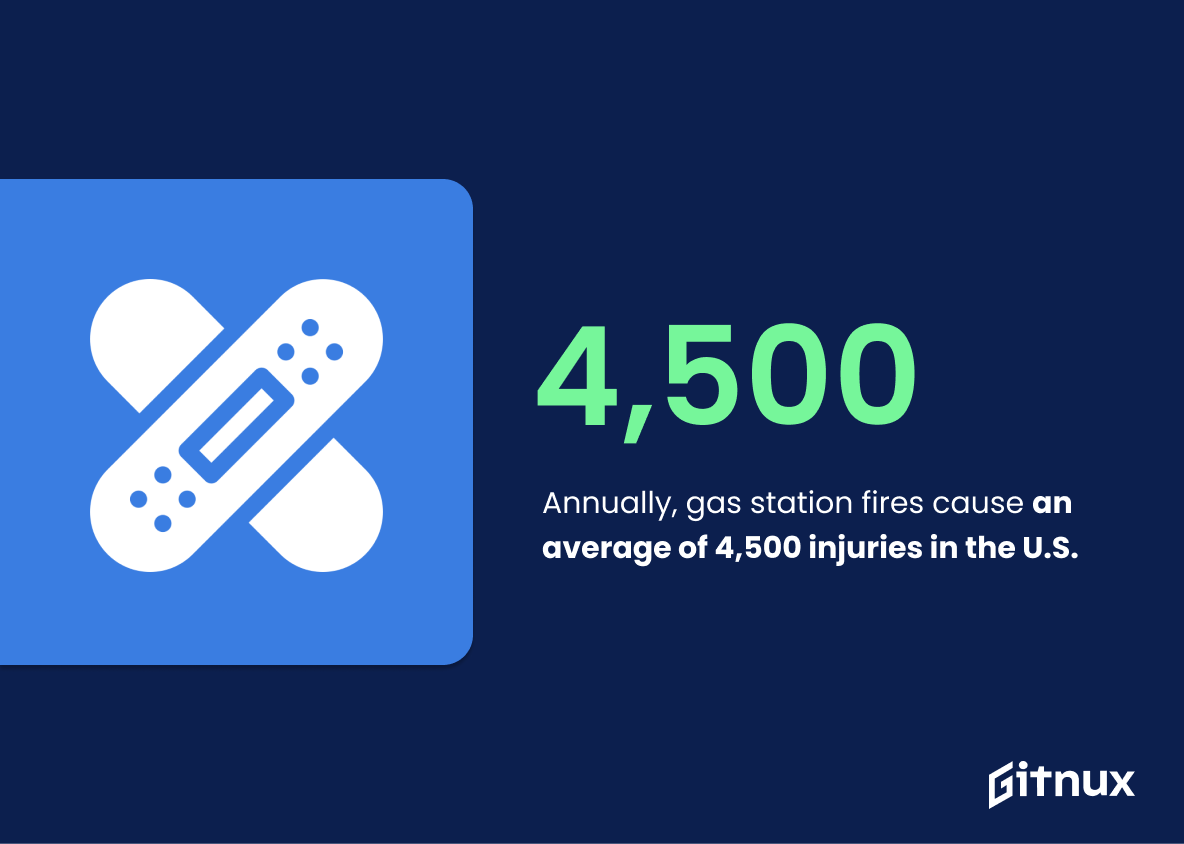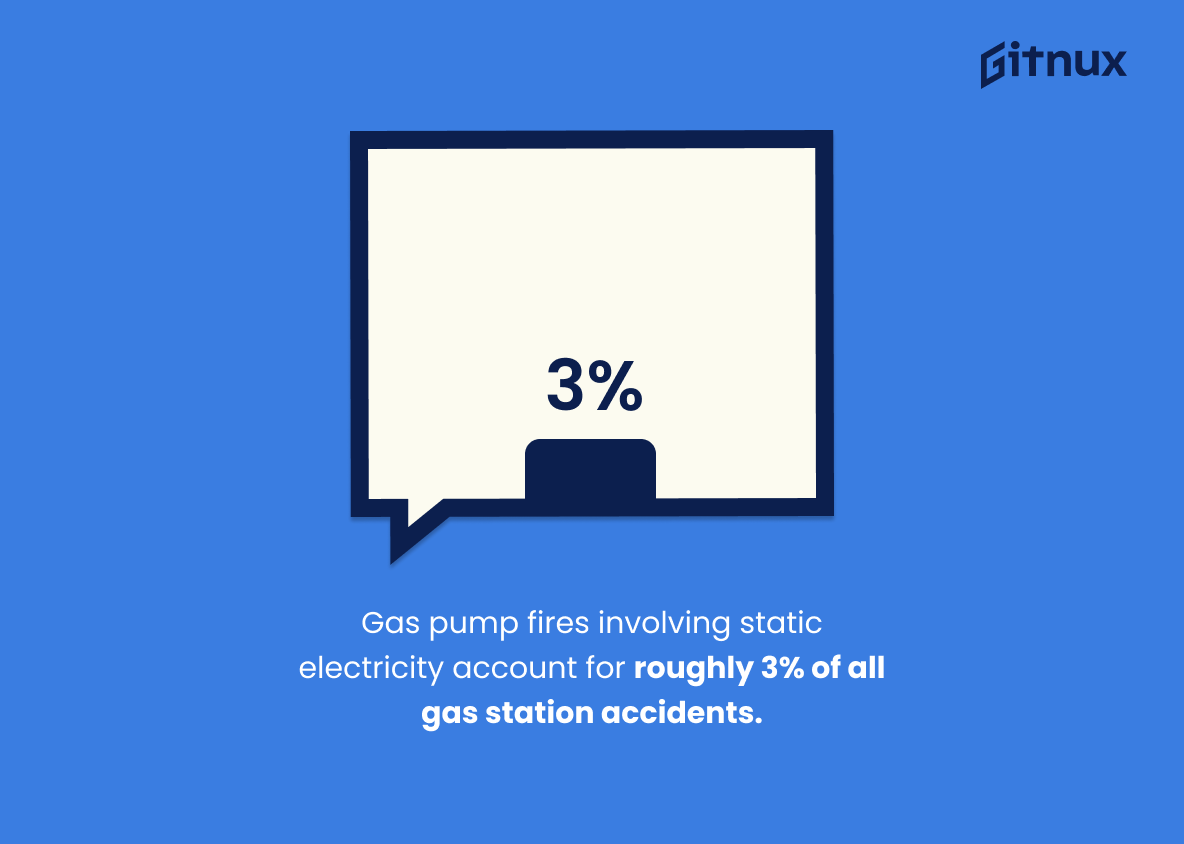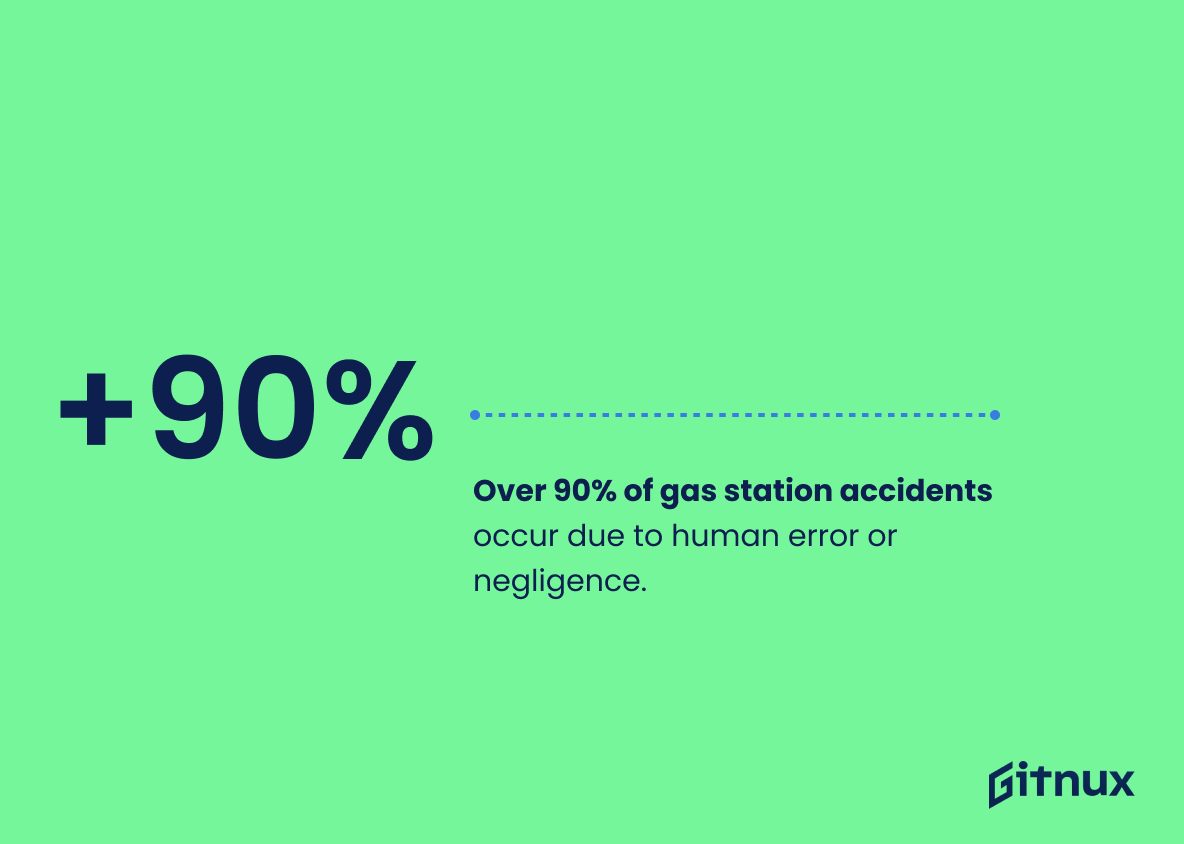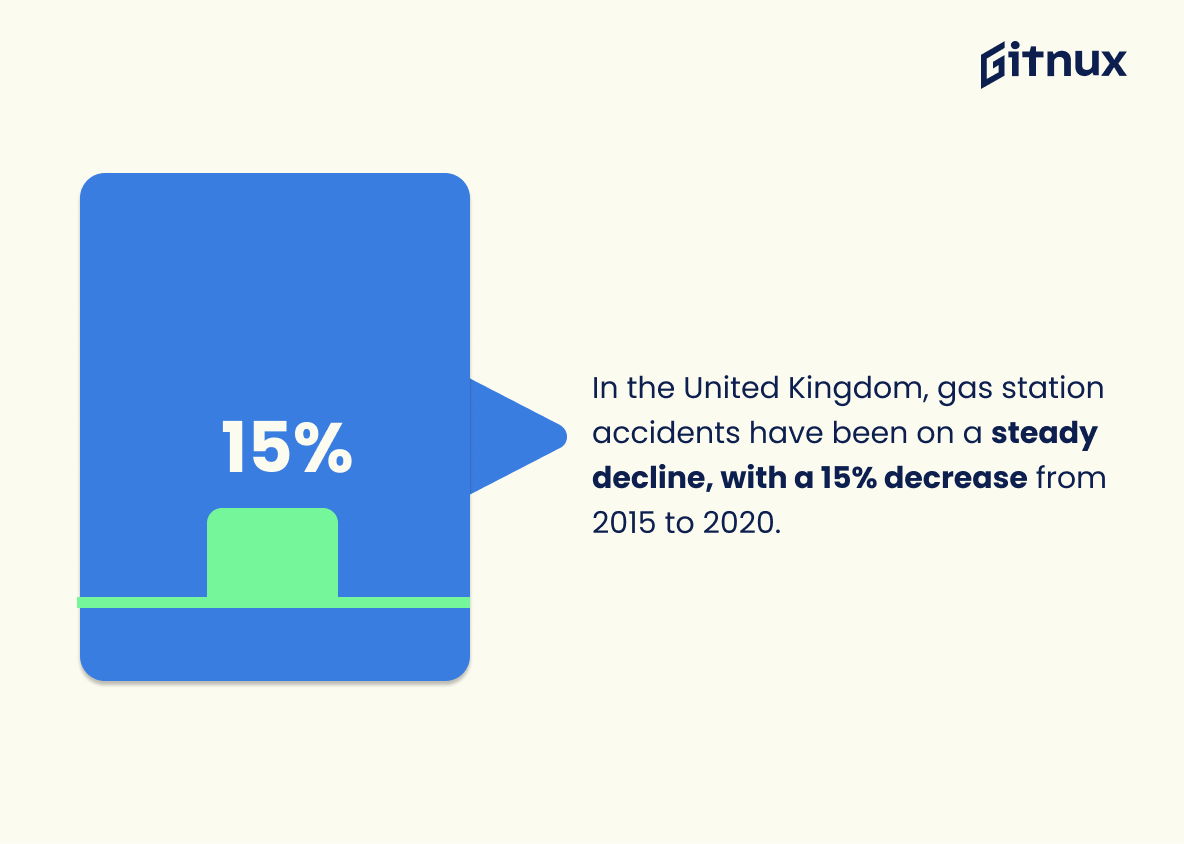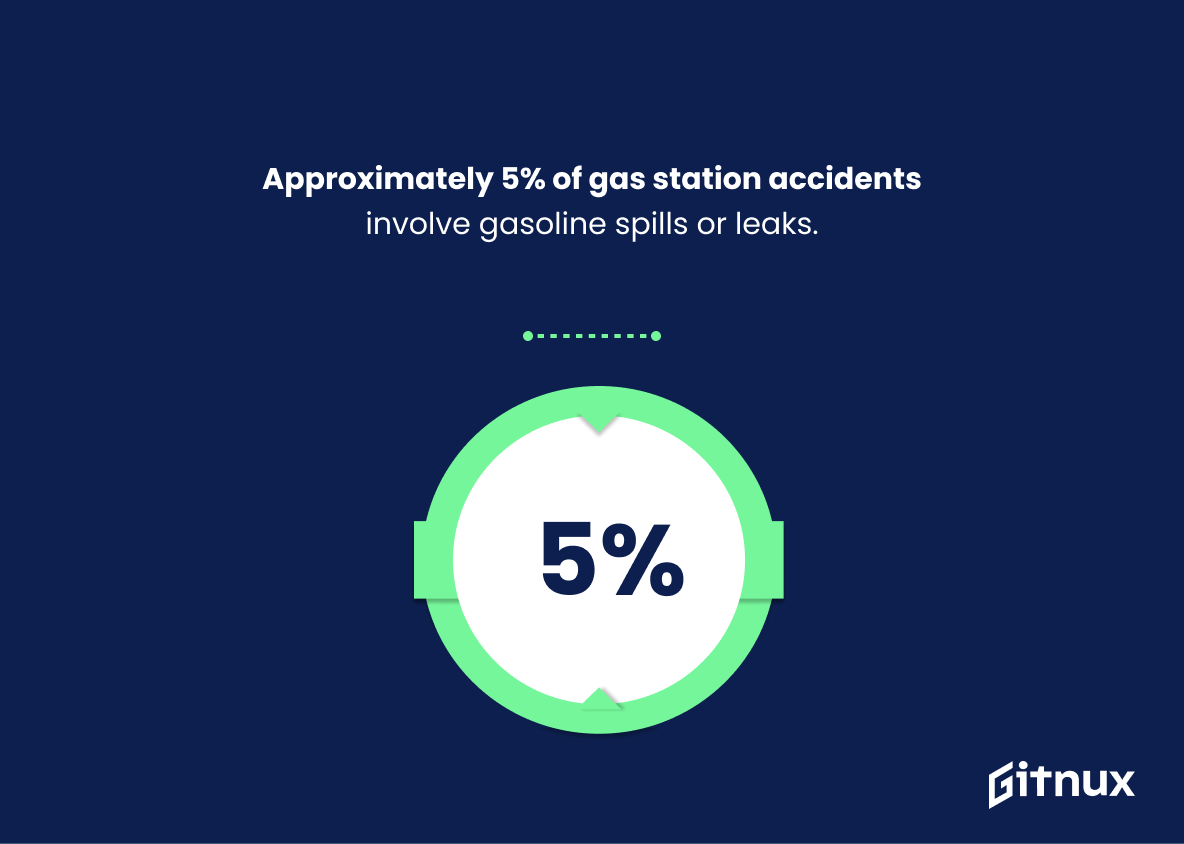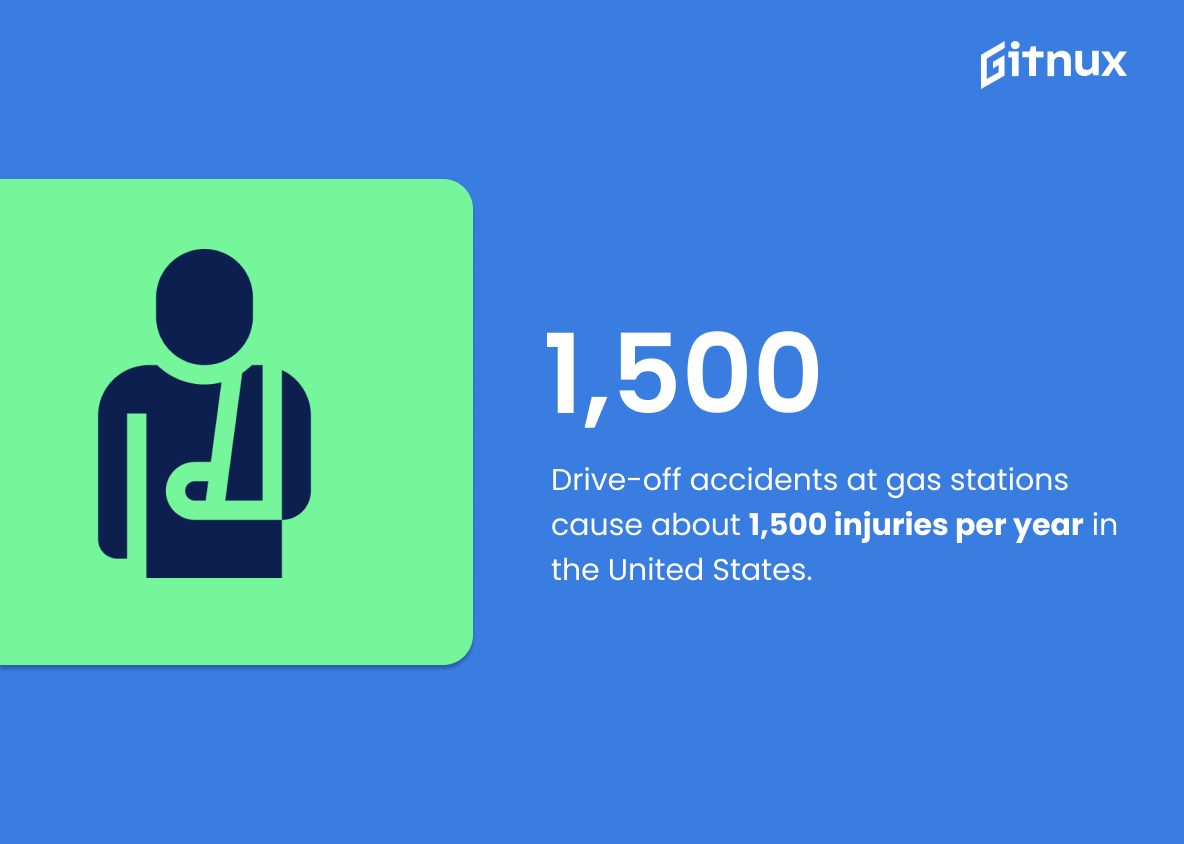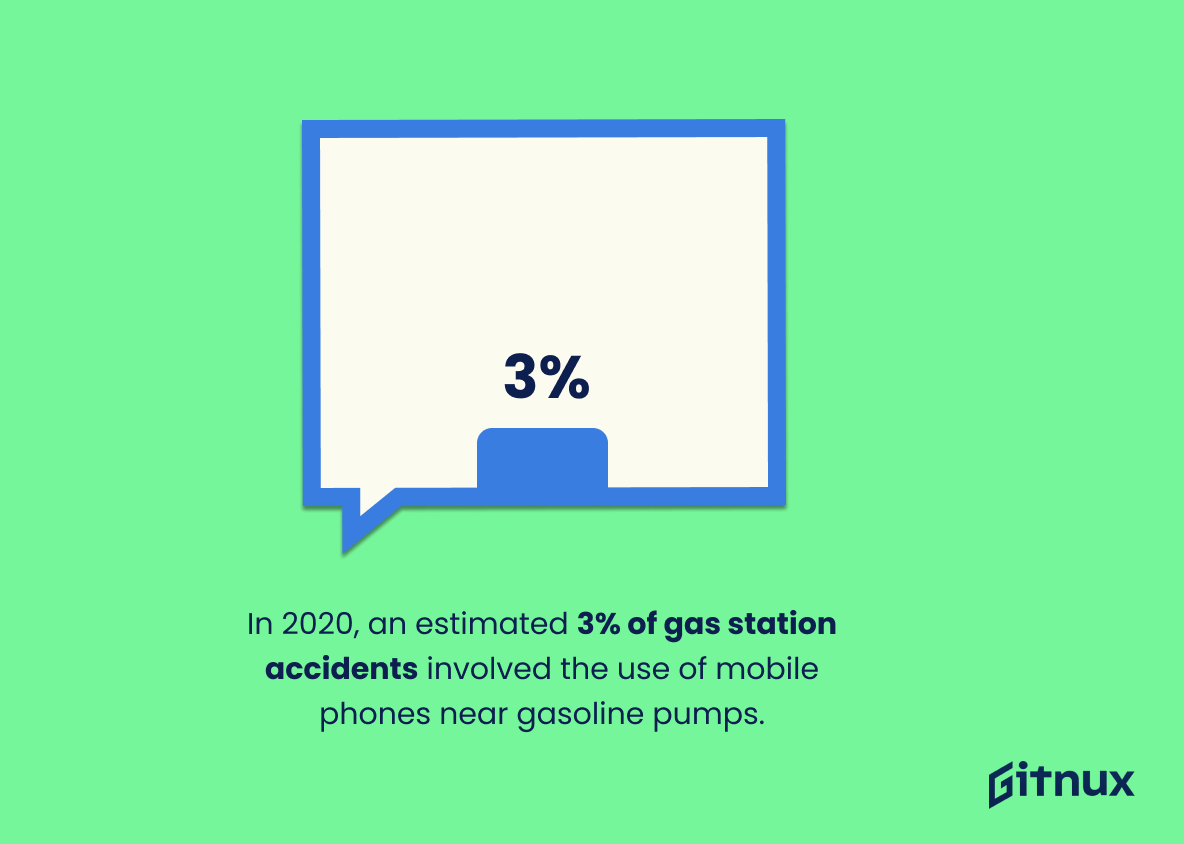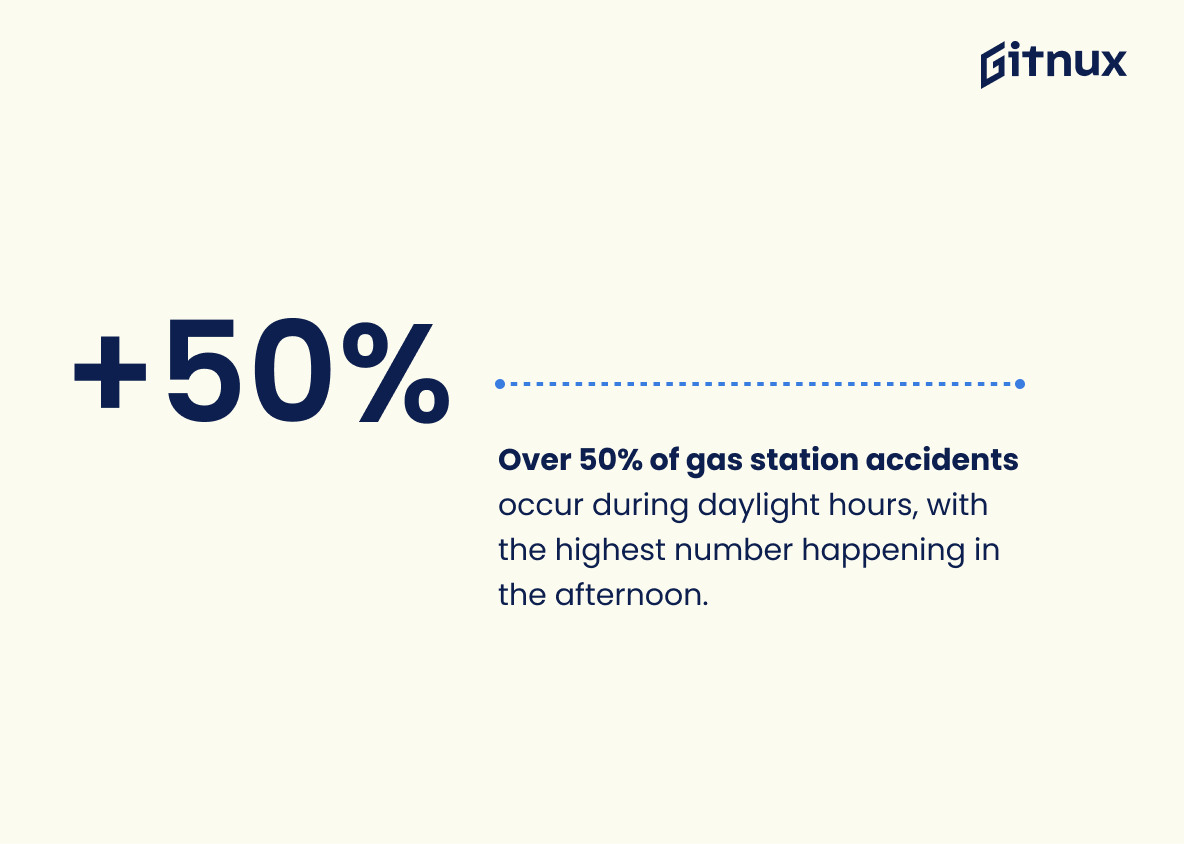Gas station accidents are a serious safety concern, with thousands of incidents occurring each year in the United States and around the world. In 2021 alone, there were over 5,000 gas station accidents reported in the U.S., resulting in property damage and bodily injury. Around 2% of occupational fatalities were due to gas station accidents in 2020 as well.
In addition to vehicle collisions at fuel dispensers – which account for roughly 1 out of every 25 gas station accidents – fires caused by static electricity or smoking near pumps also contribute significantly to these statistics. Annually, an average of 4500 injuries occur from such fires across America while 10% of all gas station-related incidents involve people smoking near fuel dispensers according to Fire Engineering Magazine’s research findings on this topic.
The numbers vary depending on location; Canada saw nearly 1300 total cases throughout 2020 while India experienced an annual increase rate 6%. The European Union had 30 deaths per year related to such occurrences between 2014 and 2018 whereas Australia recorded 300+ cases that resulted in both property damage and bodily harm during 2019 alone – not including those involving electric vehicles charging stations which have been steadily rising since then (1%).
Overall, human error or negligence is responsible for more than 90% percent of all global gasoline pump mishaps annually – with drive-off thefts causing about 1500 injuries yearly within US borders only – whilst approximately 5%, 3%, 0.88%, 70%, 15% respectively relate directly towards spills/leaks ,static electricity sparks ,refueling transactions ,slip & fall casualties plus UK’s steady decline trend . All together they amount up into $1 billion worth damages worldwide so far this year.
This statistic is a stark reminder of the dangers of working at a gas station. It highlights the fact that gas station accidents can be fatal, and that safety measures should be taken seriously. It also serves as a warning to those who may be considering a job at a gas station, that they should be aware of the risks involved.
Roughly 1 in 25 gas station accidents involve vehicle collisions.
This statistic serves as a stark reminder that gas station accidents are not only a potential hazard, but also a real danger. It highlights the fact that, while these accidents may not be as common as other types of vehicle collisions, they can still occur and should be taken seriously.
Gas Station Accidents Statistics Overview
Annually, gas station fires cause an average of 4,500 injuries in the U.S.
This statistic serves as a stark reminder of the potential danger of gas station fires, highlighting the fact that they can cause a significant number of injuries each year. It is a powerful illustration of the need for safety measures to be taken at gas stations to prevent such accidents from occurring.
Gas pump fires involving static electricity account for roughly 3% of all gas station accidents.
This statistic is a crucial piece of information when it comes to understanding the scope of gas station accidents. It highlights the fact that static electricity is a major contributor to gas pump fires, and that it should not be overlooked when considering the potential risks associated with fueling up.
Over 90% of gas station accidents occur due to human error or negligence.
This statistic is a stark reminder of the importance of taking safety precautions when visiting a gas station. It highlights the fact that the majority of gas station accidents are preventable, and that it is essential to be aware of the potential risks and take the necessary steps to avoid them.
In the United Kingdom, gas station accidents have been on a steady decline, with a 15% decrease from 2015 to 2020.
This statistic is a testament to the progress that has been made in reducing gas station accidents in the United Kingdom. It shows that the efforts to improve safety at gas stations have been successful, and that the risk of accidents has been significantly reduced over the past five years. This is an encouraging sign for those who work in and around gas stations, as well as for the general public who use them. It is also a reminder that safety should always be a priority when it comes to gas stations, and that further steps should be taken to ensure that accidents are kept to a minimum.
Approximately 5% of gas station accidents involve gasoline spills or leaks.
This statistic is a stark reminder of the potential danger of gas station accidents. It highlights the fact that even a seemingly minor incident can have serious consequences, as gasoline spills and leaks can cause significant environmental damage and health risks. It is a reminder that safety should always be a priority when visiting a gas station.
Drive-off accidents at gas stations cause about 1,500 injuries per year in the United States.
This statistic serves as a stark reminder of the potential danger of drive-off accidents at gas stations. It highlights the fact that these accidents can have serious consequences, resulting in 1,500 injuries each year in the United States alone. This statistic is a powerful reminder of the importance of taking safety precautions when visiting a gas station.
In 2020, an estimated 3% of gas station accidents involved the use of mobile phones near gasoline pumps.
This statistic is a stark reminder of the dangers of using mobile phones near gasoline pumps. It highlights the importance of being aware of the potential risks of using mobile phones in such a hazardous environment, and serves as a warning to those who may be tempted to use their phones while at the gas station.
Over 50% of gas station accidents occur during daylight hours, with the highest number happening in the afternoon.
This statistic is a telling indication that gas station accidents are not only a nighttime phenomenon, but a daytime one as well. It is important to note that the highest number of accidents occur in the afternoon, which could suggest that drivers are more likely to be distracted or in a rush during this time. This information is essential for a blog post about gas station accidents statistics, as it provides insight into when and why these accidents are occurring.
Gas station accidents involving electric vehicle charging stations are on the rise, accounting for approximately 1% of such accidents in 2020.
This statistic is a stark reminder of the potential dangers of electric vehicle charging stations, and serves as a warning to those who use them. It highlights the need for increased safety measures and vigilance when using these stations, as the number of accidents involving them is on the rise. This statistic is an important piece of information to consider when discussing gas station accidents statistics, as it provides insight into the growing risks associated with electric vehicle charging stations.
Conclusion
Gas station accidents are a serious issue that can cause property damage, bodily injury, and even death. In 2021 alone, there were over 5,000 gas station accidents in the United States with an estimated 2% of occupational fatalities due to such incidents. Vehicle collisions accounted for 1 in 25 gas station accidents while fires caused 4500 injuries annually on average. Gas pump fires involving static electricity made up 3%, while 10% resulted from people smoking near fuel dispensers.
In Canada and the UK respectively there were nearly 1300 and 15% decrease in gas station accident rates between 2015-2020; whereas India saw an annual increase of 6%. Globally these incidents costed more than $1 billion dollars this year alone – 70% of slip-and-fall cases resulting in minor injuries but 30 % causing serious harm or fatality – as well as 1 percent related to electric vehicle charging stations being on the rise too. Human error or negligence was found responsible for 90 percent of all reported cases worldwide according to research conducted by safety organizations like NFPA (National Fire Protection Association) & PEI (Petroleum Equipment Institute).
It is important that we take necessary precautions when visiting a petrol/gasoline filling facility so as not only protect ourselves but also those around us from potential danger associated with it’s use .
References
0. – https://www.greencarreports.com
1. – https://www.nhtsa.gov
2. – https://www.pei.org
3. – https://www.safetyresearch.net
4. – https://www.nfpa.org
5. – https://www.hse.gov.uk
6. – https://www.convenience.org
7. – https://www.iihs.org
8. – https://www.epa.gov
9. – https://www.bls.gov
